“Only when the last tree is cut down, the last fish eaten, and the last stream poisoned, you will realise that you cannot eat money.” – Cree Indian Proverb
Introduction
A gardener must understand how different plants, soil, water, and sunlight interact to create a thriving ecosystem. Each element in a garden (like pollinators, soil health, and plant diversity) influences the others. A well-tended garden produces flowers and fruits and vegetables nourishing people. In a garden, the gardener shares the bounty with friends, neighbours, or local food banks. A responsible gardener preserves the resources by conserving water, enriching the soil, and using natural pest control methods. A resilient garden can withstand pests, droughts, or heavy rains by having diverse plants and healthy soil.
Content: What are 6 Principles of Circular Economy
- What are the 6 Principles of Circular Economy
- Why these 6 Principles are important?
- How to interpret them?
- Conclusion
Objective
The ISO 59004 standard guides on implementing circular economy principles within organizations to support sustainable development. It aims to create systems that reduce waste, encourage the efficient use of resources, and promote sustainability through recycling, reusing, and regenerating materials.
Once you go through the article, you will understand, what are the 6 principles of circular economy, why they are important and how we can understand their importance in our personal and professional lives.
Read More: https://bit.ly/LinearCircularEconomy
Definition: ISO 59004: 2024
Circular Economy (Cl 3.1.1): Economic system that uses a systematic approach to maintain a circular flow of resources by recovering, retaining or adding to their value while contributing to sustainable development.
Sustainable Development (Cl 3.1.11): Development that meets the environmental, social economic needs of the present without compromising the ability of the future generations to meet their own needs.
Life Cycle (Cl 3.2.4): Consecutive and interlinked stages in the life of a solution.
Linear Economy (Cl 3.5.10): Economic system where resources typically follow the pattern of extraction, production, use and disposal.
End of Life (Cl 3.5.30): <Product> point in time when a product is taken out of use and its resources are either recovered for processing or disposed of.
Life Cycle Assessment (Cl 3.6.8): Compilation and evaluation of the inputs, outputs and potential environmental impacts of a product system throughout its life cycle.
Read More: https://bit.ly/ReduceRecyleReuse
Detailed Information
As the world increasingly faces an urgent need to shift towards a more sustainable and regenerative economic model, the ISO 59000 family of standards emerges as a powerful catalyst for change. On 22 May 2024, the International Organization for Standardization (ISO) published a new family of standards to guide the transition to the circular economy. The standards mark the first set of international definitions and rules for the circular economy.
Sustainability is an essential part of facing current and future global challenges, not only those related to the environment. It’s a holistic approach that considers the social, environmental and economic impacts of actions and decisions taken today.
Read More: https://bit.ly/ClimateChnages
Circular Economy Principles:
Circular economy principles focus on ways to transition towards sustainable and effective solutions that meet societal needs. The focus is on the functions provided by solutions rather than on the products or services themselves.
Circular economy principles include the need for organizations to understand the stocks and flows relevant to any solutions developed or activities performed by the organization. This includes managing trade-offs between economic, environmental and social aspects.
The 6 Circular Economy Principles as per ISO 59004: 2024 are as follows.
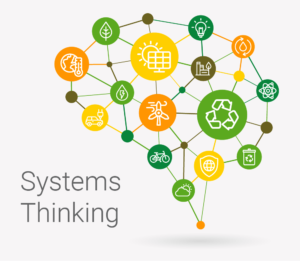 Systems Thinking: Organizations take a life cycle perspective and apply a long-term approach when considering their impacts on environmental, social and economic systems.
Systems Thinking: Organizations take a life cycle perspective and apply a long-term approach when considering their impacts on environmental, social and economic systems.
Systems thinking is a holistic approach to understanding how various parts of a complex system interact, influence each other, and work together as a whole. Instead of focusing on individual components, systems thinking emphasizes the connections and relationships within the system, looking at how elements within a structure dynamically affect one another over time. This approach is often used to analyze complex problems in fields like business, environmental science, healthcare, engineering, and social systems.
Example:
Environmental sustainability: How industrial activities, waste production, deforestation, and pollution are interconnected and impact ecosystems.
Supply Chain Management: In a manufacturing company, systems thinking could be applied to understand how procurement, production, inventory, and distribution interact.
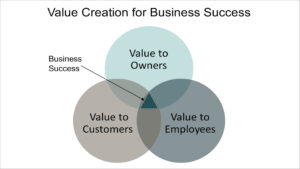 Value Creation: Value creation is the process of generating benefits, improvements, or resources that meet the needs and wants of customers, stakeholders, or society at large. In business, value creation is often associated with delivering products or services that solve problems, satisfy demands, or add convenience, quality, or enjoyment to people’s lives. This goes beyond profits and revenue, as it includes the creation of long-term benefits that contribute to an organization’s mission, customer satisfaction, and societal impact.
Value Creation: Value creation is the process of generating benefits, improvements, or resources that meet the needs and wants of customers, stakeholders, or society at large. In business, value creation is often associated with delivering products or services that solve problems, satisfy demands, or add convenience, quality, or enjoyment to people’s lives. This goes beyond profits and revenue, as it includes the creation of long-term benefits that contribute to an organization’s mission, customer satisfaction, and societal impact.
Value creation is central to a successful and sustainable business strategy. By focusing on delivering genuine benefits to customers, employees, society, and the environment, companies can thrive financially while making a positive impact.
Example:
Organic Farming: Farmers who adopt organic farming practices not only produce food without synthetic pesticides and fertilizers but also enhance soil health, reduce water pollution, and promote biodiversity.
Product innovation in technology (Apple: iPhone/MacBook),
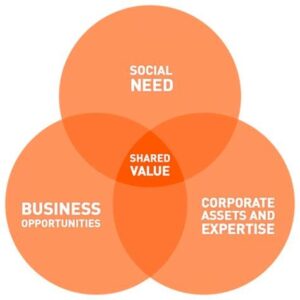 Value Sharing: Value sharing is a business and economic principle where organizations and stakeholders work together to create, distribute, and enjoy mutual benefits, often beyond financial profits. It involves developing practices and policies that benefit all parties involved, including employees, customers, communities, suppliers, and even the environment. The goal of value sharing is to build long-term relationships, foster collaboration, and support the well-being of everyone affected by an organization’s operations.
Value Sharing: Value sharing is a business and economic principle where organizations and stakeholders work together to create, distribute, and enjoy mutual benefits, often beyond financial profits. It involves developing practices and policies that benefit all parties involved, including employees, customers, communities, suppliers, and even the environment. The goal of value sharing is to build long-term relationships, foster collaboration, and support the well-being of everyone affected by an organization’s operations.
Example:
Fair Trade Practices: Fair Trade organizations work with coffee farmers in developing countries to ensure they receive fair prices for their products, which can be significantly higher than the market rate. These cooperatives often reinvest a portion of their profits back into the community for education, healthcare, and sustainable farming practices.
Read More: https://bit.ly/3PillersSustainability
-
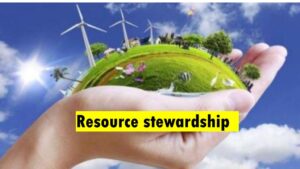
Resource stewardship Resource Stewardship: Resource stewardship is the responsible management and conservation of resources—such as water, land, minerals, and energy—to ensure their availability and health for future generations.
It involves using resources efficiently, reducing waste, minimising environmental impact, and promoting sustainable practices. Resource stewardship is driven by the recognition that resources are finite and that maintaining a balance between consumption and conservation is essential for long-term environmental, economic, and social well-being.
Example:
Water Management in Agriculture: Agriculture is one of the largest consumers of freshwater, yet unsustainable water use can deplete aquifers and degrade local water sources, threatening future water security. Some of the stewardship practices in agriculture include efficient irrigation, crop rotation, soil health, rainwater harvesting and monitoring it systematically,
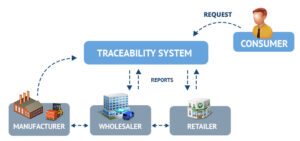 Resource Traceability: Resource traceability is the ability to track and trace the journey of resources, materials, or components through every stage of production, distribution, and use. This process involves documenting and tracking the origin, movement, and transformation of resources from raw materials to finished products and even their eventual disposal or recycling. Organizations are accountable for sharing relevant information with interested parties.
Resource Traceability: Resource traceability is the ability to track and trace the journey of resources, materials, or components through every stage of production, distribution, and use. This process involves documenting and tracking the origin, movement, and transformation of resources from raw materials to finished products and even their eventual disposal or recycling. Organizations are accountable for sharing relevant information with interested parties.
Industries such as food, pharmaceuticals, manufacturing, and electronics rely heavily on resource traceability for safety, compliance, and sustainability purposes.
Example:
Coffee Production Traceability by QR codes on packaging to avoid unethical practices promotes fair trade and supports sustainable farming, aligning the supply chain with environmental and social responsibility standards: Harvesting, Processing, Transport, Roasting, Packaging, Distribution, and Consumer access.
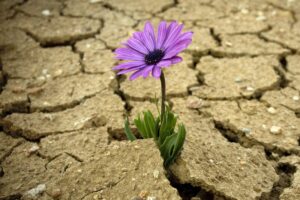 Ecosystem Resilience: Ecosystem resilience refers to an ecosystem’s capacity to absorb both natural (hurricanes, Volcanic eruptions) and management-imposed disturbance (overfishing, pollution) but still retain its basic function so that it can behave in the same way over time including preventing harmful losses and releases and taking into account planetary boundaries. An ecosystem with low resilience can be considered at risk of changing into a different state.
Ecosystem Resilience: Ecosystem resilience refers to an ecosystem’s capacity to absorb both natural (hurricanes, Volcanic eruptions) and management-imposed disturbance (overfishing, pollution) but still retain its basic function so that it can behave in the same way over time including preventing harmful losses and releases and taking into account planetary boundaries. An ecosystem with low resilience can be considered at risk of changing into a different state.
Resilient ecosystems support flora, fauna and micro-organisms, which are vital for delivering clean air, fresh water and fertile soils.
Example:
Mangrove Forest: Can recover from natural disturbances and continue to provide critical ecological, economic, and social benefits.
Conclusion:
The circular economy principles outlined in ISO 59004: 2024 offer a comprehensive framework for transitioning towards sustainable and resilient business models. By prioritizing systems thinking, organizations can address complex issues holistically, ensuring that all interactions within a system are considered. Emphasizing value creation and value sharing encourages businesses to focus on long-term benefits, not only for customers and stakeholders but also for society and the environment. Resource stewardship and traceability play critical roles in responsible resource management and supply chain transparency, safeguarding resources for future generations. Finally, fostering ecosystem resilience ensures that environmental systems remain robust in the face of both natural and human-made challenges, protecting biodiversity and essential resources. Together, these principles guide organizations towards solutions that not only meet societal needs but also promote economic, social, and environmental well-being, laying the foundation for a sustainable future.
Read More: https://bit.ly/ISO59000Series
References:
ISO 59004: 2024
ISO 59010: 2024
ISO 59020: 2024
Industry Experts
This is the 223rd article of this Quality Management series. Every weekend, you will find useful information that will make your Management System journey Productive. Please share it with your colleagues too.
In the words of Albert Einstein, “The important thing is never to stop questioning.” I invite you to ask anything about the above subject. Questions and answers are the lifeblood of learning, and we are all learning. I will answer all questions to the best of my ability and promise to keep personal information confidential.
Your genuine feedback and response are extremely valuable. Please suggest topics for the coming weeks.
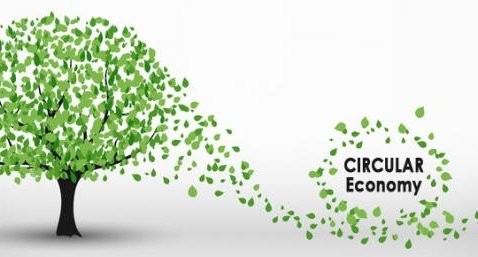
Leave a Reply
You must be logged in to post a comment.